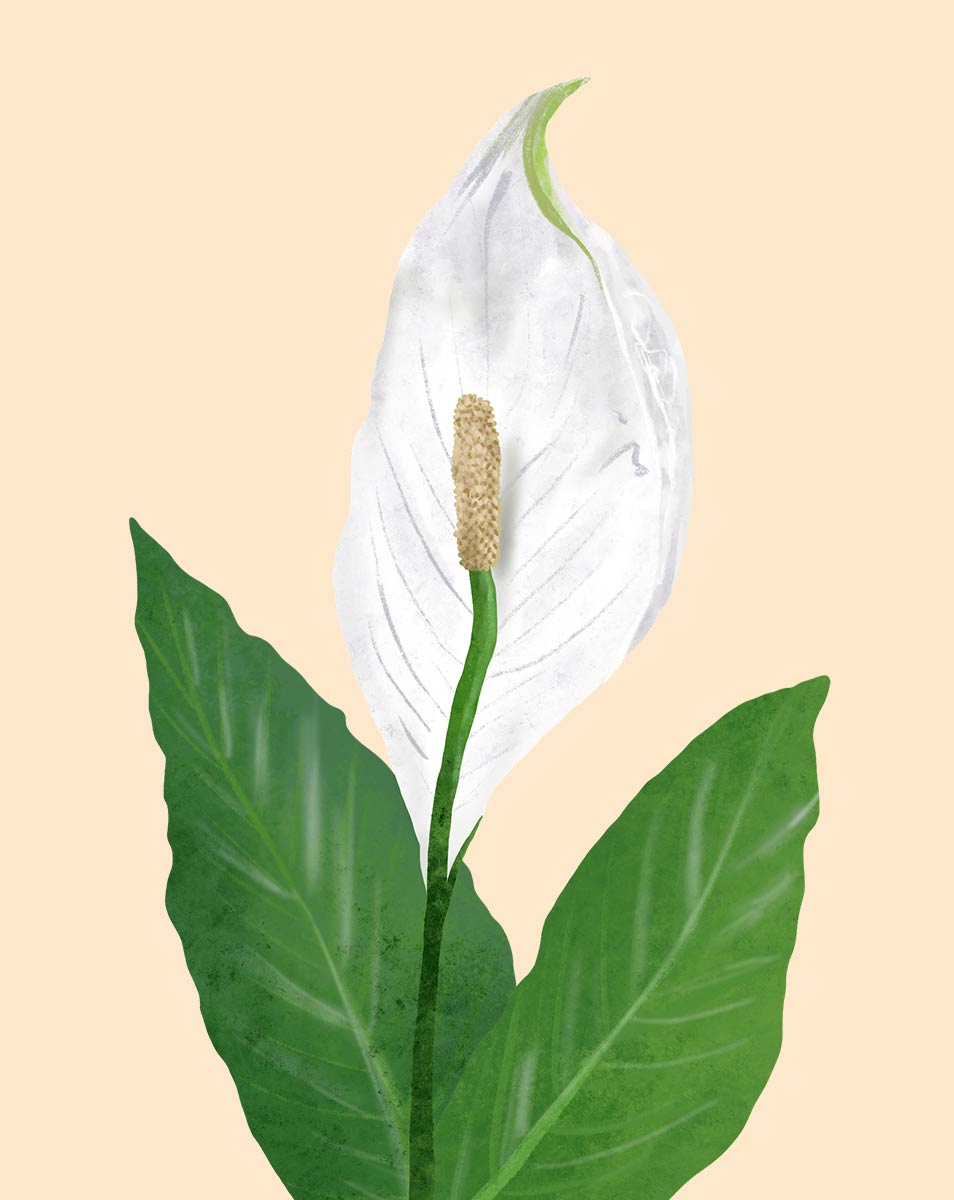Additional Plant Care
Propagation
Peace lily plants can be spread by carefully separating the roots and stems of the parent plant and replanting them in fresh potting soil in separate containers. To do this, first water the parent plant a day or two before dividing it to make the soil easier to work with. Then, carefully take the plant out of its pot, shake off any extra soil, and separate the roots and stems that are clumped together. Cut any tangled or dead roots with a clean, sharp knife or pruning shears. Then, plant each piece in a separate pot with fresh potting soil, water it well, and put it in a warm, bright place that doesn't get direct sunlight. Keep the soil moist but not soggy, and the new plants should start to grow in a few weeks.
Toxicity
"Peace lilies are toxic to humans and pets if ingested, and are one of the most common houseplants poison control is called about. The peace lily contains calcium oxalate crystals, which can cause irritation and discomfort if chewed or ingested. When ingested, it may lead to symptoms such as mouth and throat irritation, drooling, swelling, and potential gastrointestinal distress such as vomiting or diarrhea. Peace lilies can also cause skin irritation or allergic reactions, and direct contact with the plant's sap may cause redness, itching, or a rash. If the sap comes into contact with the skin, it's advisable to wash the affected area with soap and water. When it comes to pets, peace lilies are considered to be toxic to cats, dogs, and other animals if ingested. Ingesting the plant can cause similar symptoms, including mouth and throat irritation, drooling, vomiting, and potential gastrointestinal issues. If you suspect your pet has ingested parts of the peace lily or is experiencing any concerning symptoms, it's best to contact a veterinarian for guidance."
Repotting
When the peace lily is growing, in the spring or early summer, is the best time to move it to a new pot. Choose a pot that is one size bigger and has holes in the bottom for drainage. Put fresh potting soil in the bottom of the new pot. Carefully take the plant out of its old pot and pull out any roots that are dead or broken. Put the plant in the new pot and add soil until it reaches the plant's base. Firmly pack the dirt around the roots and give the plant a lot of water. Keep the plant in the shade for a few days and keep it out of the sun until it gets used to its new pot.
Pruning
To prune a peace lily, use clean, sharp pruning shears and cut off any yellow or brown leaves and dead flowers. It is important to cut cleanly and not hurt the tissue around the cut. Also, peace lily can get very thick and bushy, and trimming it every so often can help keep it in a more balanced and attractive shape. To do this, cut off the tips of the stems just above a leaf node to make them branch out and grow fuller. Peace lily can also be kept healthy and full of life by dividing it and repotting it every few years. You can prune the plant whenever you need to, but don't prune it in the winter when the plant is sleeping. With the right pruning, peace lilies can keep their good looks and continue to grow for many years.
Fertilizing
To feed a peace lily plant, first choose a balanced, water-soluble fertilizer with equal amounts of nitrogen, phosphorus, and potassium. Before you put the fertilizer on the plant, you should water it well and dilute the fertilizer to half the recommended strength. Apply the fertilizer to the soil around the plant's base with a watering can or spray bottle, being careful not to get any on the leaves. During the growing season, which usually lasts from spring to early fall, do this every two to four weeks. Don't give the plant fertilizer when it's sleeping in the winter. Too much fertilizer can hurt the plant, so it's important to follow the directions on the package and not use too much. If the leaves start to turn brown or black, cut back on how often you feed them or make the solution weaker.
Soil
Peace lily plants do best in loose, well-draining soil that holds some water but doesn't get soggy. Equal parts peat moss, perlite, and vermiculite should make a good soil mix for peace lily plants. Peat moss helps keep water in the soil, and perlite and vermiculite help water drain away. Adding a small amount of compost or well-rotted manure can also help provide the plant with the nutrients it needs to stay healthy. The pH of the soil should be somewhere between 6.0 and 6.5. To keep the plant from getting root rot, it's important to make sure the soil has a lot of air in it.




















